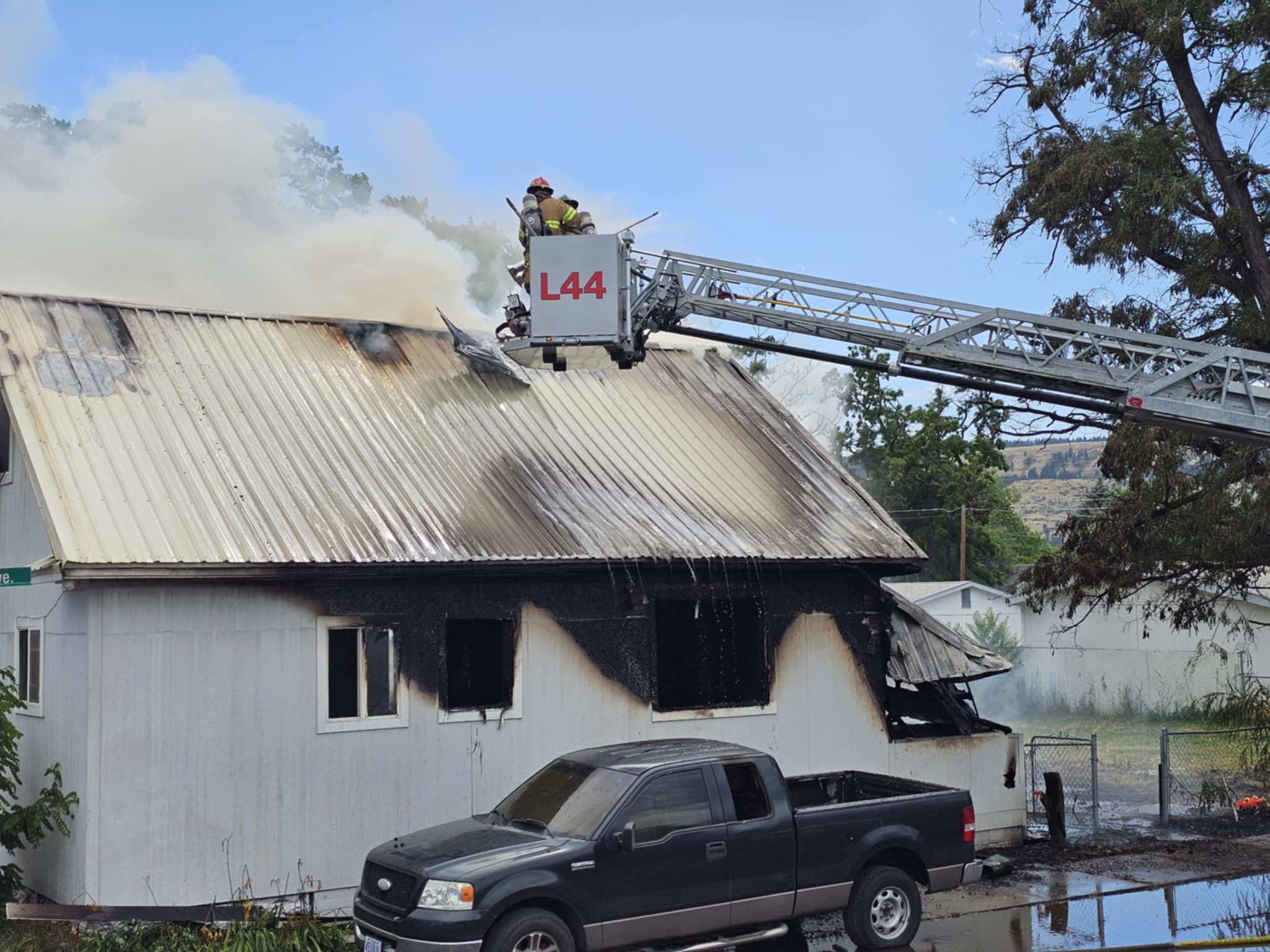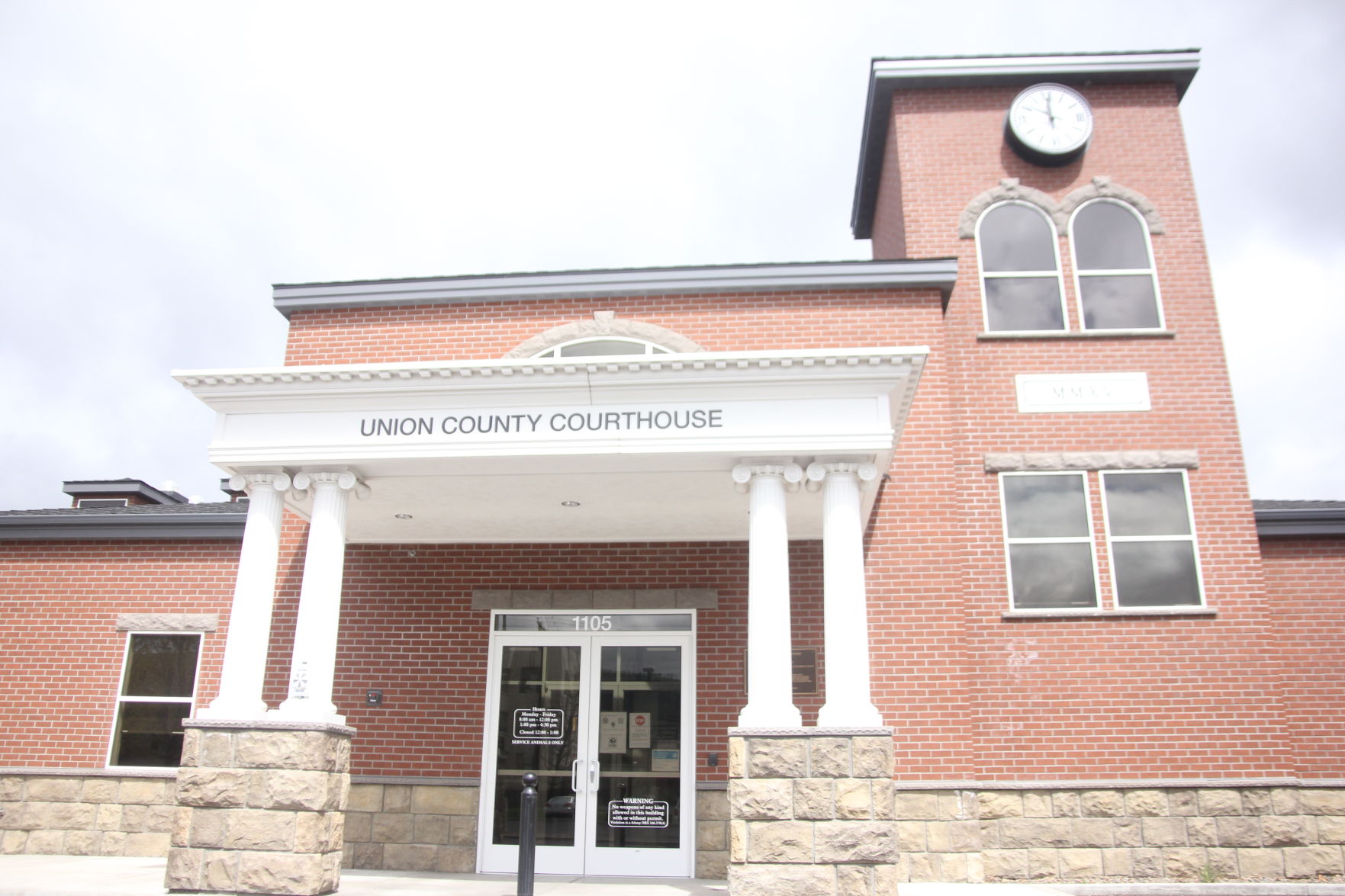AGAINST ALL ODDS
Published 12:00 am Friday, August 23, 2002

- REMINDER OF STRUGGLE:A single medicine flag stands at Captain Jack's Stronghold near the Oregon-California border, where 50 Modoc warriors held off 1,000 U.S. Army troops in the winter of 1872-73. ().
By Mark Highberger
For The Observer
Above the lava plain in the stone-broken land along the Oregon – California border, above a ground tilted with slopes and carved with ravines, a single medicine flag stands. Its staff might be only a dead juniper gripping the rocks, its banner only a cluster of cloth and feathers fluttering in the wind, but its spirit belongs to the Modoc Indians, as the land once did. The most dramatic and tragic chapters of the Modoc story, however, begin with the usual plot, involve the usual characters:
The time is the mid-nineteenth century; the place, the Klamath Basin of southern Oregon, a land of marshes, forests and mountains, and for thousands of years the ancestral home of the Modoc Indians. Then into this country move the settlers who either fear the tribe or want its land. As a result, the politicians bend to the pressure, and the Modocs move to the reservation. But then the plot turns: The Modocs flee, the cavalry pursues, and a war begins.
If you’d like to follow the trail of this story through its battlefield, then come along to Captain Jack’s Stronghold, a lava labyrinth in northern California, where 130 winters ago, 50 Modoc warriors and their families fought the United States Army to a standoff.
The man who has come through history as the representative of both his people and their struggle is a Modoc named Kientpoos, whom the whites called Captain Jack. It was an 1864 treaty that put Captain Jack and his people on the Klamath Reservation near today’s Klamath Falls, but it was a simmering feud that triggered the problems. They just didn’t get along with the more numerous Klamath Indians, an adversary for at least the previous two centuries.
So after five years of harassment from both the Klamaths and the government, more than 300 Modocs in three bands left the reservation and returned to their homeland along the Lost River. For the next couple of years, nobody bothered them. But in late November of 1872, a cavalry company rode into the Modoc camp and ordered them back to the reservation. The Modocs resisted, fighting erupted, and the war started. Although some Modocs returned to the reservation, approximately 160 others fled to the lava beds. And in this land of volcanic fissures and cracks and caves, they waited for the war to find them.
Although the end of that war, like its beginning, is predictable in that the outgunned and outnumbered Modocs eventually surrendered, the fighting of it involved courage and tragedy, sacrifice and betrayal. And as it began to unfold during the winter of 1873, newspapers and magazines across the nation as well as in Europe described the struggle of the Modocs, the assassination of a general, the surrender of Captain Jack, and the imprisonment and hangings of the Modoc leaders.
Along the paths that now wind through what is known as Captain Jack’s Stronghold, located on the edge of California’s Lava Beds National Monument, you’ll find an eerie stillness, as though time is as rock-rigid as the lava, for here are the caves that sheltered the Modocs from winter, the walls that shielded them from bullets.
A looping trail system, which contains 23 marked sites, guides you through the battlefield that the Modocs called home during the winter of 1872-73. You’ll step past their outposts and shelters, their defense lines and command posts; you can stand where the chiefs made decisions, where the warriors built fortifications, and where the people raised medicine flags for their magical powers and built dance rings for the spiritual strength they believed would help them defeat their enemies. But it was the lava itself that gave them their greatest military advantage.
"Textbooks don’t do the place justice," says a woman on the trail. She gazes out over the lava maze that was an impenetrable fortress to army troops. "Even though I’ve read about the war and the battlefield," she says, "I could never imagine what it was like until I saw it."
Neither could the army. From a distance, the land seems flat and even, an easy walk or ride across gentle, open terrain. "It began with the army smugly optimistic," writes the great-granddaughter of one of the Modoc war chiefs. "Quite clearly, the soldiers expected to kill or capture every Modoc who had moved to the lava beds."
And so on a foggy January morning in 1873, Colonel Frank Wheaton led the army’s first assault against the Stronghold, a two day battle that saw over 300 soldiers attack the 160 Modocs. Of these, approximately 50 were warriors. The result was 37 casualties for the army, none for the Modocs. In addition, the Modocs were able to salvage the rifles and ammunition dropped by fleeing soldiers.
"I have never before encountered an enemy occupying a position of such great natural strength," Colonel Wheaton said after the battle. "One of our men was wounded twice during the day, but he did not see an Indian at all." Wheaton also stated in his report that he thought it would take at least 1,000 men to defeat the Modocs.
As a result of their embarrassing defeat, the army bolstered itself with reinforcements, howitzers, and mortars, then attempted to negotiate a settlement. But this, too, backfired: At one of the peace conferences, the Modocs shot three of the peace commissioners, killing a general and a minister, and wounding the Indian agent. The war was on again.
The army’s side of this war is also represented at the Stronghold, for here you can see the remains of the bivouacs, outposts, and fortifications built by young soldiers in a strange land, fighting a people they didn’t even know and couldn’t often see. "I never realized what a horrible thing war is, until I came out on this trip," wrote a second lieutenant stationed at Gillem’s Camp, the army post built near the Stronghold and named for the campaign’s first commanding officer.
The old camp site is the location of one of the two formal monument’s dedicated to the army’s cause. The other is Canby’s Cross, which marks the spot where Captain Jack assassinated General E.R.S. Canby during the April peace conference. It was the act that pushed the Modoc leader beyond the point of no return.
By fighting and fleeing, the Modocs remained free until late spring. But hunger, exhaustion, and desperation finally split the bands, and the Modocs turned against one another. Captain Jack surrendered on the first day of June 1873, six months after the first shots were fired in the Modoc camp on Lost River.
"They scared me when they came to where I was living on Lost River and started this fight," Captain Jack said at his trial. "I cannot understand why they were mad with me." But Captain Jack could not save his people. The war leaders were imprisoned or hanged, the families exiled, their land taken away.
Today what is left of their struggles is the broken ground of lava and sage that holds the memory of their battles against overwhelming odds. And above this land rises a single medicine flag, which some say represents the idea that this place still belongs to the Modocs. As Captain Jack said when he argued that at least the lava beds should be left for his people, "Nobody will ever want these rocks."









